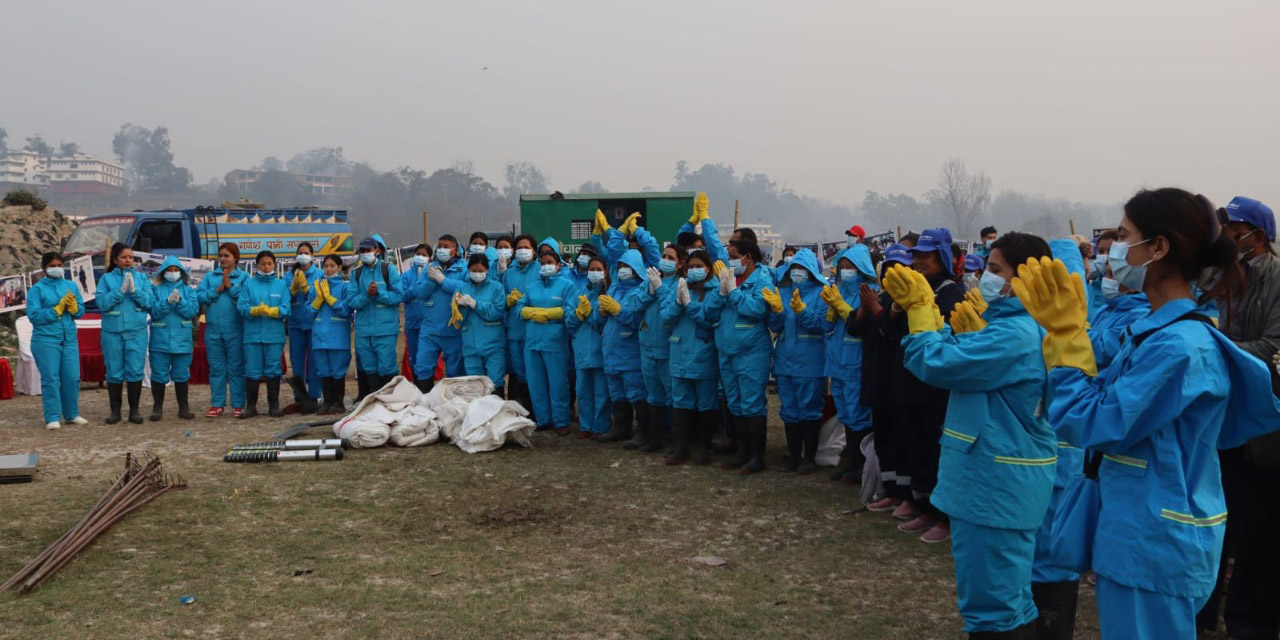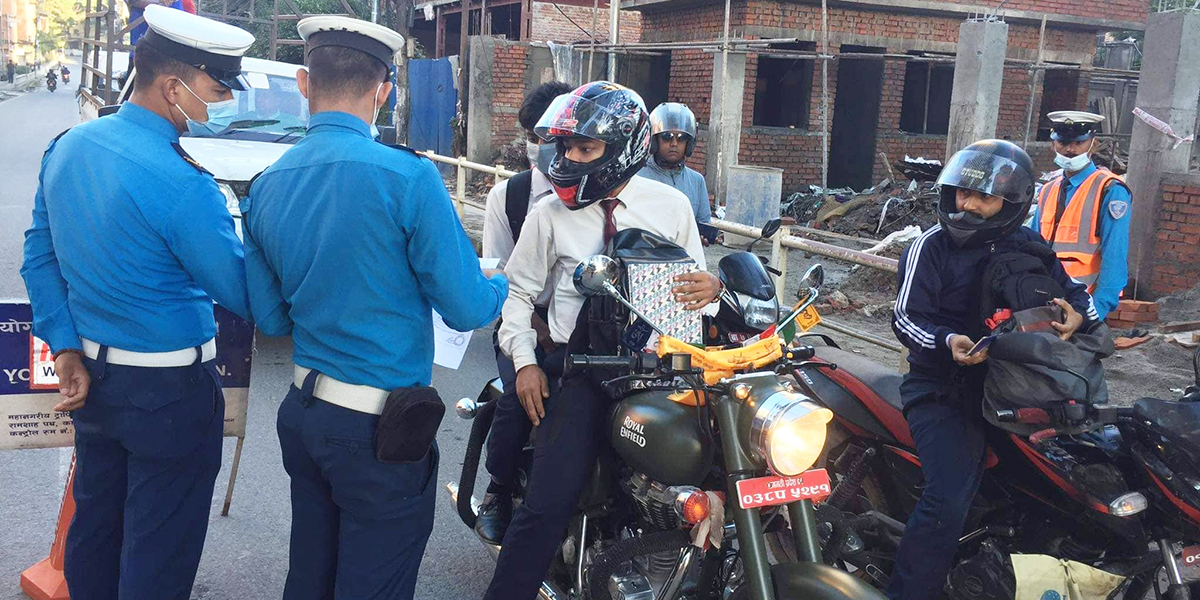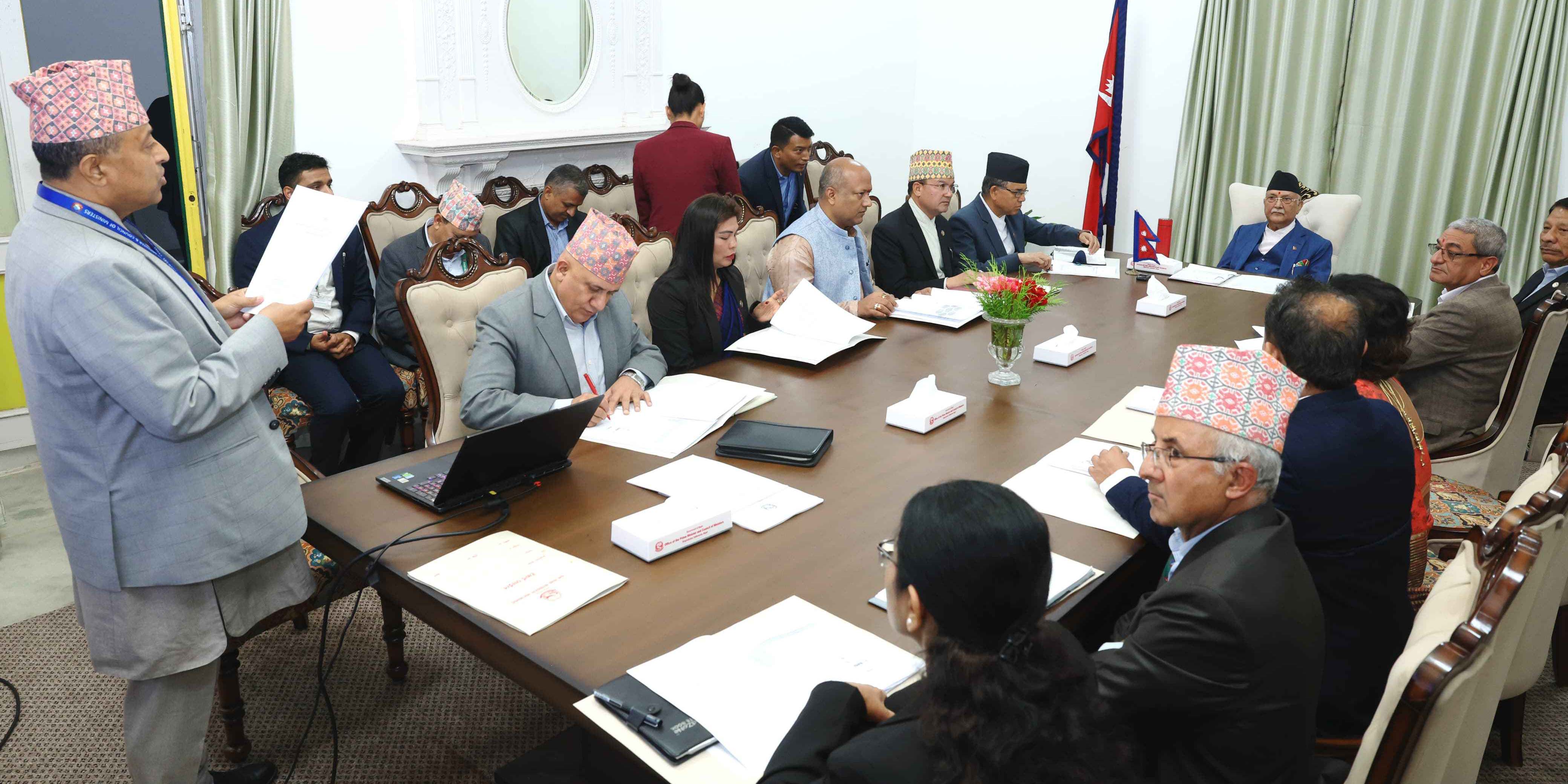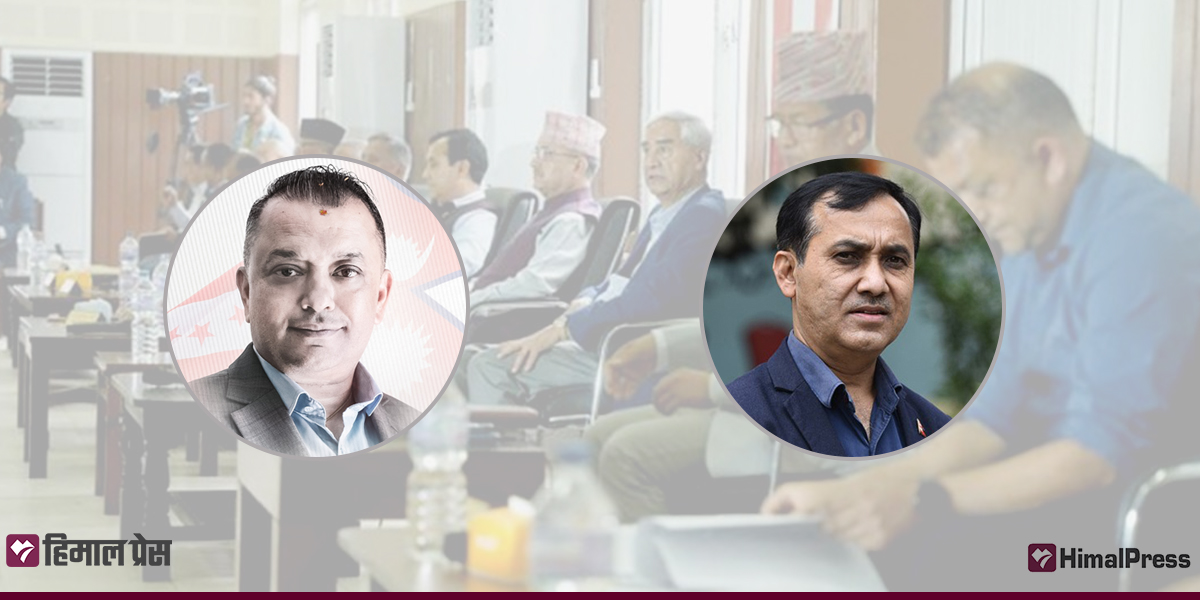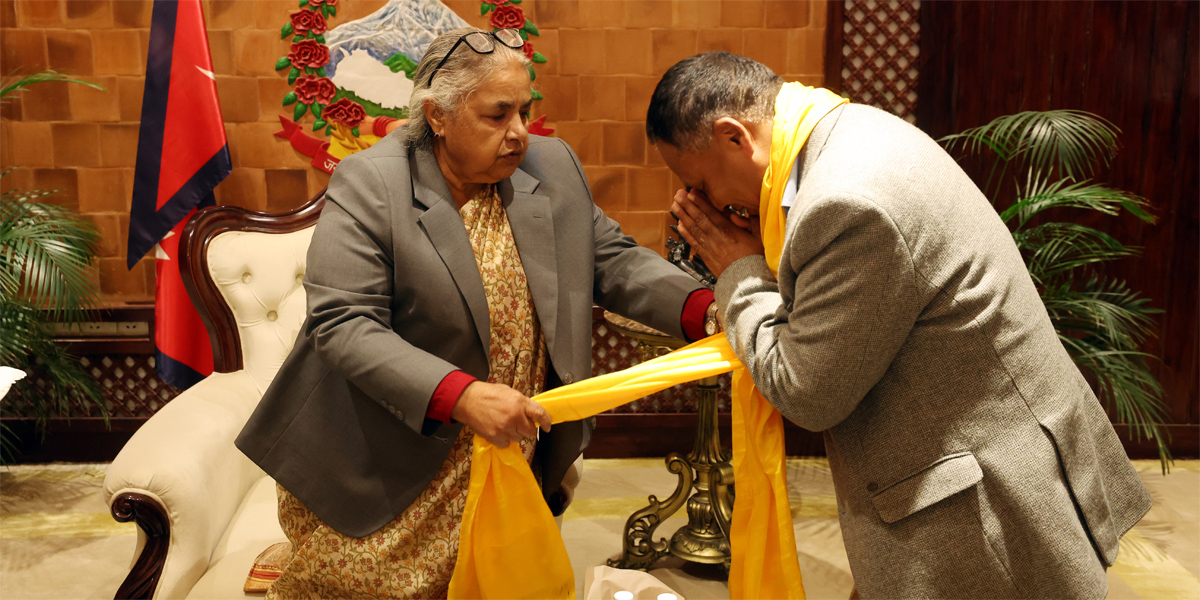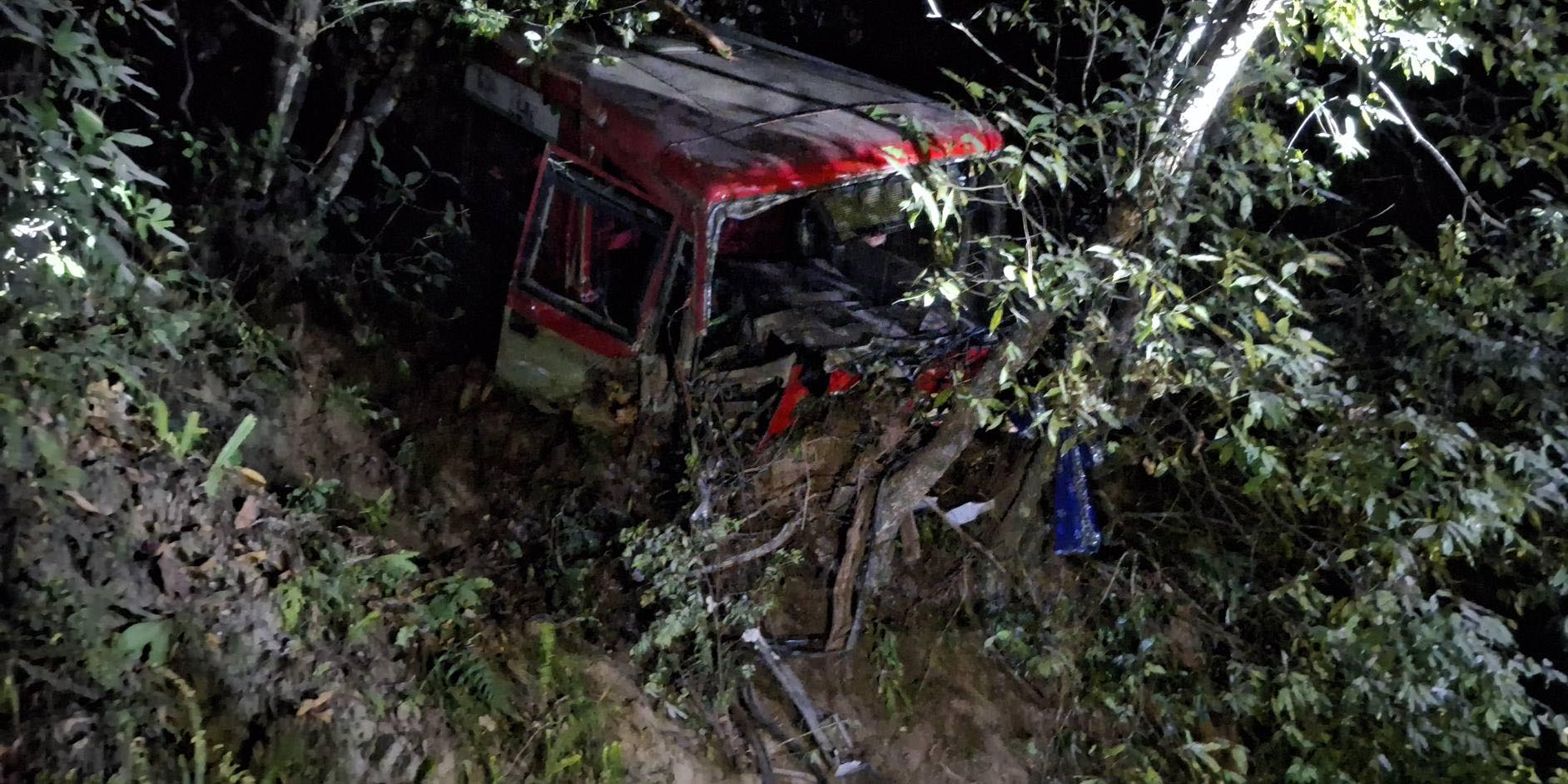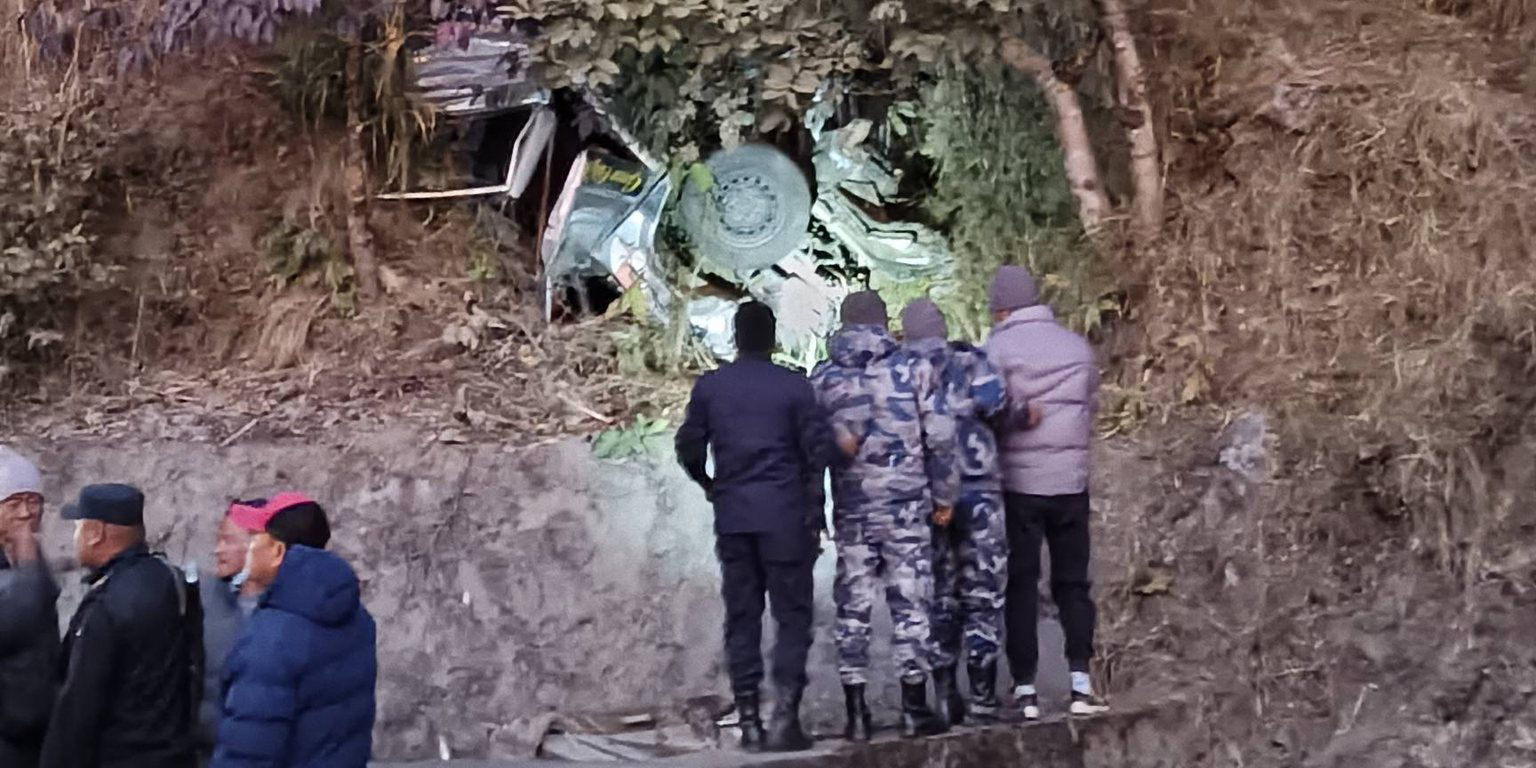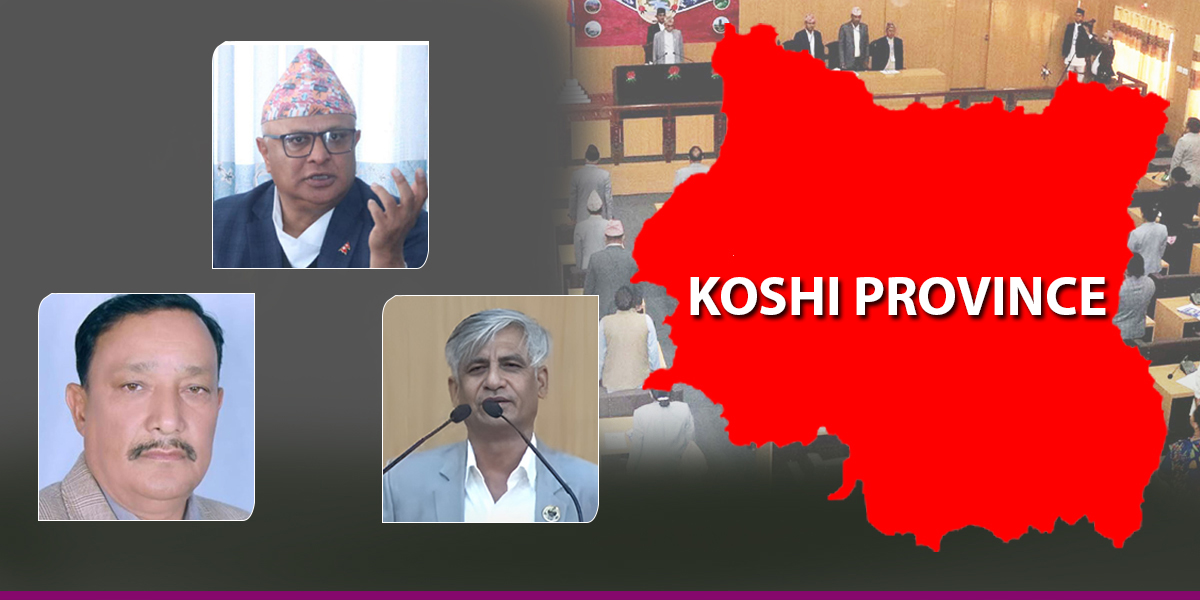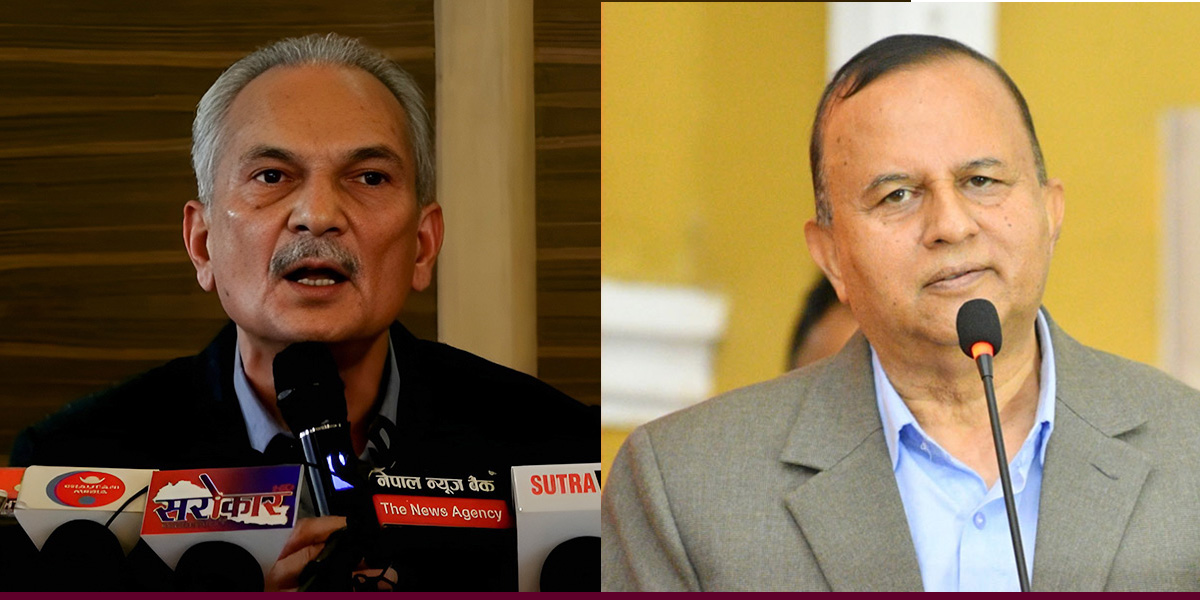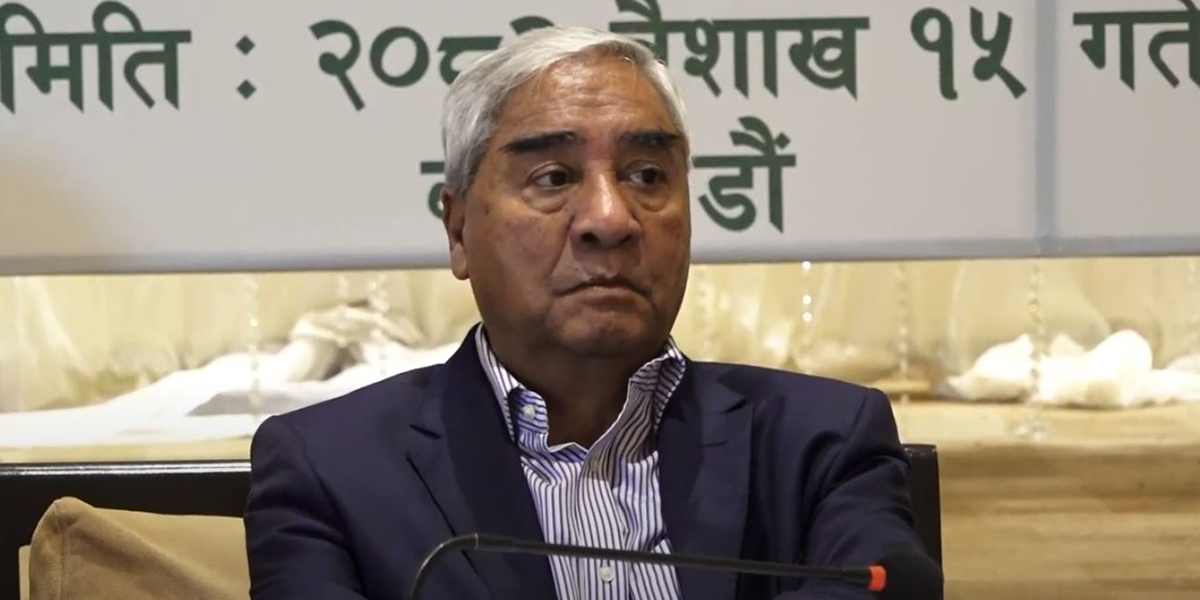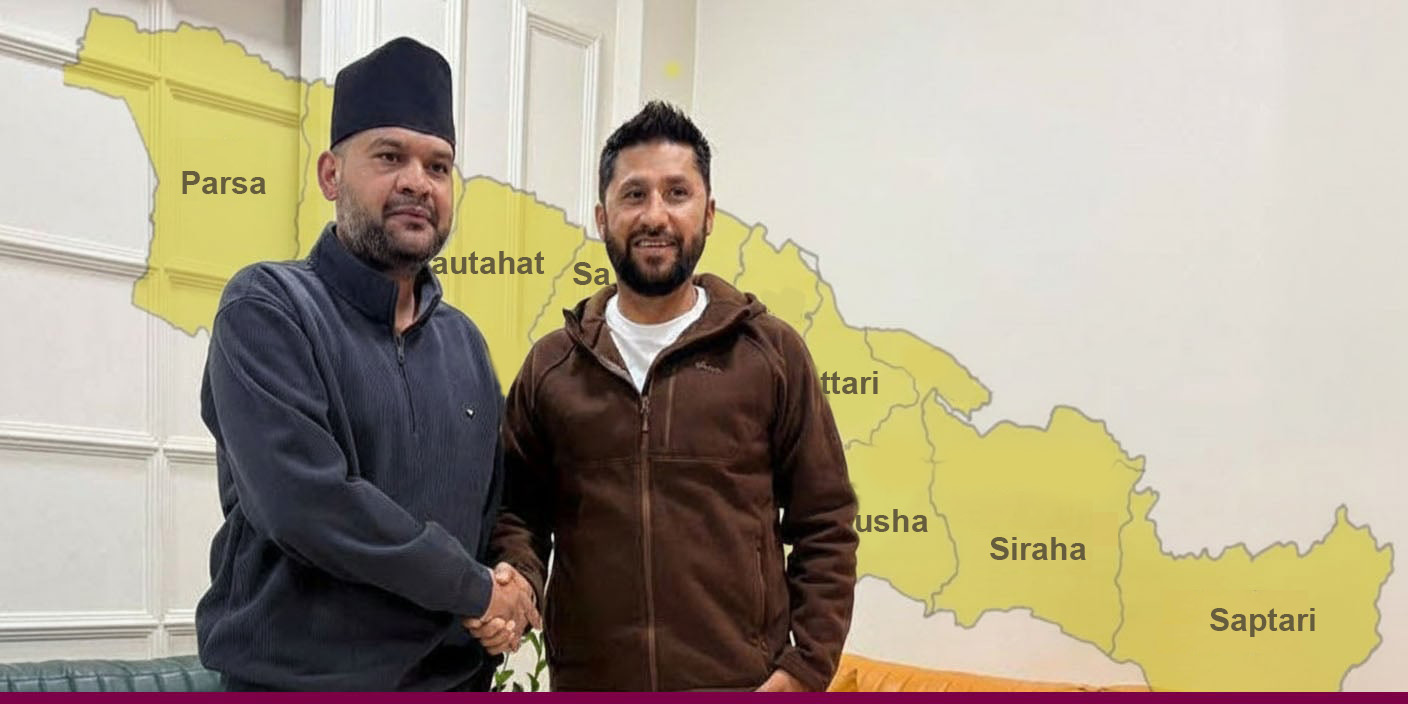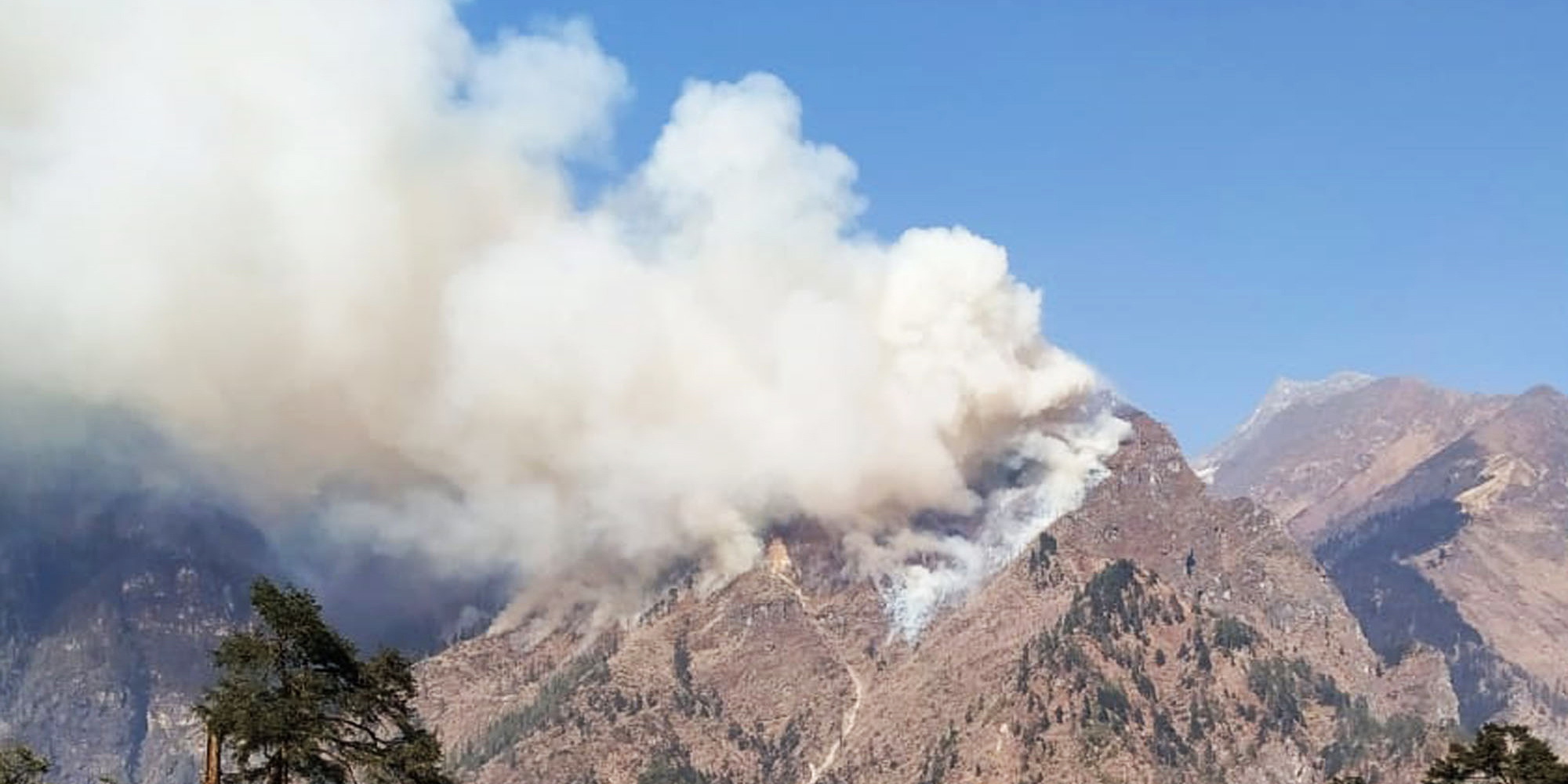 This file photo shows a recent forest fire in Taichi of Manang.
This file photo shows a recent forest fire in Taichi of Manang.
KATHMANDU: The Department of Environment installed an air quality monitoring station at Rara National Park in Mugu district three years ago. The report from the station, which was being piloted in the mountainous region, was surprising to many.
According to the report, the concentration of particulate matter (PM) 2.5 in the air at the national park was much higher than the accepted limit. The PM 2.5 concentration in the air at Rara National Park was 41.25 µg/m3 in March and 56 µg/m3 in April, which is higher than the accepted limit of 40 µg/m3.
PM 2.5 refers to tiny particles or droplets in the air that are two and one-half microns or less in width.
The monitoring station in the national park has been installed at an altitude of about 3,000 meters. “We installed the station to monitor the air quality of a pristine Himalayan region, but the results were shocking,” said Govinda Lamichhane, an environment inspector with the department, in an interview with Himal Press.
Unlike urban areas, Rara National Park does not have many sources of pollution. According to Lamichhane, pollutants from the Tarai region, as well as forest fires, must have reached mountainous regions. “This level of air pollution in places like Rara National Park poses a serious challenge,” he added.
It is difficult to ascertain the pollution level in mountainous areas since the station in Mugu is the only one in the entire Himalayan region that extends over more than 1,500 kilometers. But the pollution level of Rara National Park certainly gives an indication of the pollution level in our mountain areas.
Most of the stations dysfunctional
The department was able to monitor the air pollution level in Mugu thanks to the air quality monitoring station. Unfortunately, about 70% of the stations installed all over the country are not working.
The department has installed stations at 27 locations, but only eight of them are functional. Currently, the stations at Bhaisepati, Khumaltar, and Shankhapark in the Kathmandu Valley, Dhankuta, two stations in Pokhara, and Rara National Park are working.
Nepal had only six stations until 2016. The number increased to 14 in 2017, 18 in 2018, 21 in 2019, and 27 in 2020. It is unfortunate that many of these stations, which cost in excess of Rs 10 million, are not working. Some stopped operating six months ago, while others stopped about a year ago.
Air quality monitoring stations provide real-time data on pollution levels in the air. These stations are set up so that the government can develop programs to reduce pollution by analyzing the data collected by them. However, it is becoming difficult to prepare programs as most of the stations have gone dysfunctional.
Environmental expert Bhushan Dahal said that the government cannot develop strategies to reduce pollution in the absence of data. “Stations are installed to monitor air quality. Since most of them are not working, policymakers have to rely on old data when making plans and programs,” he added.
As most of the stations are not working, policymakers are not getting real-time data. The Bhimdutta station in Kanchanpur has remained dysfunctional for the past seven months. Even when it was operational, it did not have data for eight to 10 days in a month.
In its report released earlier this month, the department analyzed data from only 17 stations, and only a few of these stations provided complete real-time data.
Lamichhane, however, said that the analysis of data from even 17 stations should be considered an achievement. “We have been able to analyze air quality levels despite limited means and resources and the lack of data,” he added.
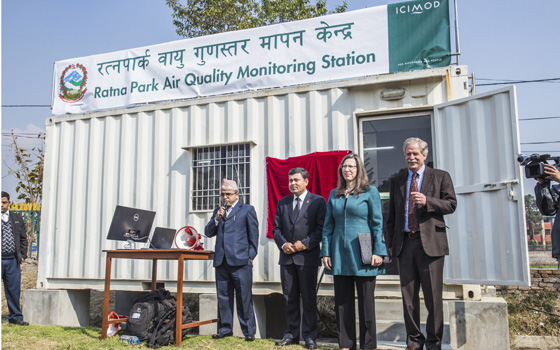
Maintenance budget remains unspent
Most of the stations are not working due to the lack of regular upkeep and maintenance. “Mechanical equipment needs timely maintenance. But we have been unable to conduct regular maintenance due to a lack of budget and a shortage of skilled workers,” said Shankar Prasad Poudel, the spokesperson for the department. “Although a certain budget has been allocated for upkeep and maintenance, the money goes unspent.”
“The main reason behind this is that the standards are different from what has been specified in the operational guidelines prescribed by the finance ministry. Although we have made amendments to the standards, they have yet to be approved. There are certain problems.”
Although Poudel did not specify what those problems were, he was clearly referring to the government’s working style.
Tuladhar also said that air quality monitoring stations are not becoming functional due to a lack of maintenance resulting from a weakness in budget allocation by the concerned agency. “This shows air pollution is not a government priority. Clearly, the government is not taking the issue seriously,” he added.
The eight stations are currently operational due to technical support from the International Center for Integrated Mountain Development. “Different parts of these stations, which run round the clock, have to be replaced periodically. It will be difficult to operate them if parts are not replaced as per the schedule,” Lamichhane added.
The department is collecting data from alternative sources in the absence of real-time data from these monitoring stations. “But our focus should always be on getting real-time data from our stations,” he added.
Public health risks
According to physician Dr. Lochan Karki, air pollution causes several respiratory diseases such as asthma, bronchitis, pneumonia, lung cancer, hypertension, stroke, skin allergies, etc. “Air pollution causes several short-term and long-term risks,” he said.
According to the State of Global Air report from 2020, over 42,000 people die annually in Nepal due to air pollution-related causes. The report also claims that life expectancy for Nepalis has decreased by at least three years due to air pollution.
“Although air pollution is not a direct cause, it indirectly leads to several diseases in Nepal,” Dr. Karki added.
Controlling Measures
According to Lamichhane, the major causes of air pollution in Nepal are emissions from motor vehicles, industries, brick kilns, waste incineration, transboundary pollution, forest fires, etc.
He said that local people need to be aware of the side effects of burning crop stubble. “The role of local governments can be effective in raising awareness,” he added.
Dr Karki also stated that all three tiers of government should work together to control air pollution. “Old vehicles need to be gradually phased out, industries should be located outside residential areas, and unplanned urbanization should be discouraged. Streets should also be paved. The government needs to focus on these areas,” Dr Karki said. “There is no alternative to wearing facemasks and goggles.”
Action plan in limbo
The government has brought Air Pollution Management Action Plan, 2020 to control air pollution in Kathmandu Valley.
“The action plans need to be implemented if we are to control air pollution. This can significantly reduce pollution levels,” Tuladhar said. “However, the laxity shown in implementing the action plan shows that the government is not serious about air pollution.”
Among other things, the action plan envisions preparing emission standards, promoting electric vehicles, enacting laws for converting vehicles using fossil fuels to electric, setting up mobile emission testing stations, increasing greenery along roads, planting trees in public places, regularly monitoring industries and brick kilns to ensure adherence to pollution standards, and preventing waste burning. However, the government is not prioritizing the implementation of these programs.





